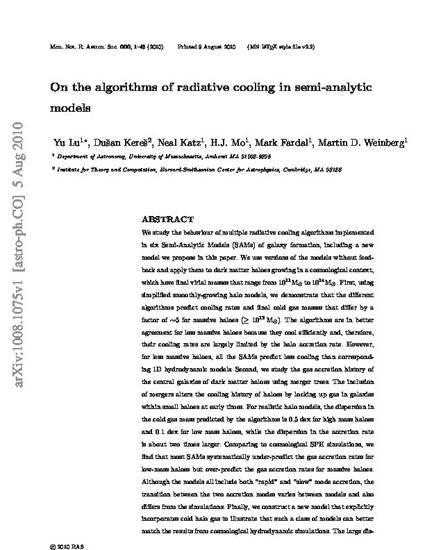
We study the behaviour of multiple radiative cooling algorithms implemented in six Semi-Analytic Models (SAMs) of galaxy formation, including a new model we propose in this paper. We use versions of the models without feedback and apply them to dark matter haloes growing in a cosmological context, which have final masses that range from 10^{11}Msun to 10^{14}Msun. First, using simplified smoothly-growing halo models, we demonstrate that the different algorithms predict cooling rates and final cold gas masses that differ by a factor of ~5 for massive haloes (>10^{12}Msun). The algorithms are in better agreement for less massive haloes because they cool efficiently and, therefore, their cooling rates are largely limited by the halo accretion rate. However, for less massive haloes, all the SAMs predict less cooling than corresponding 1D hydrodynamic models. Second, we study the gas accretion history of the central galaxies of dark matter haloes using merger trees. The inclusion of mergers alters the cooling history of haloes by locking up gas in galaxies within small haloes at early times. For realistic halo models, the dispersion in the cold gas mass predicted by the algorithms is 0.5 dex for high mass haloes and 0.1 dex for low mass haloes, while the dispersion in the accretion rate is about two times larger. Comparing to cosmological SPH simulations, we find that most SAMs systematically under-predict the gas accretion rates for low-mass haloes but over-predict the gas accretion rates for massive haloes. Although the models all include both "rapid" and "slow" mode accretion, the transition between the two accretion modes varies between models and also differs from the simulations. Finally, we construct a new model that explicitly incorporates cold halo gas to illustrate that such a class of models can better match the results from cosmological hydrodynamic simulations.
Available at: http://works.bepress.com/neal_katz/5/

This is a pre-published version which is collected from arXiv link.